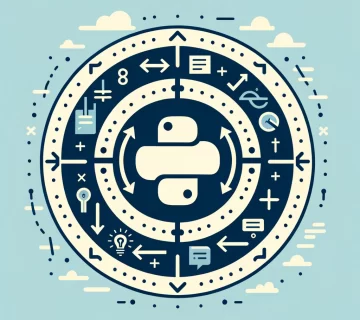Mastering a Programming Language: Beyond Reading to Practical Coding
Learning a programming language like Python involves much more than just reading textbooks or memorizing syntax and concepts. While theoretical knowledge provides a foundation, the essence of programming mastery lies in practical application – writing code, making mistakes, and learning from them. Let’s dive into why active coding practice is crucial and how it can propel you from a beginner to a proficient programmer.
The Limitations of Theoretical Learning
Understanding the theory behind programming concepts is undoubtedly important. It gives you an overview of what’s possible and the rules of the language. However, programming is inherently practical. Without applying what you’ve learned, it’s like learning to swim without ever getting into the water.
Why Hands-On Practice is Essential
- Solidifies Understanding: Implementing the concepts you learn in real code helps solidify your understanding. It’s one thing to know what a function is, but writing and using functions in different contexts deepens your comprehension.
- Encourages Problem-Solving: Coding practice confronts you with real problems that require solutions, enhancing your problem-solving and critical thinking skills.
- Exposes You to Different Scenarios: In real-world coding, problems are rarely black and white. Practicing exposes you to various scenarios and challenges you to find effective solutions.
- Develops Debugging Skills: A crucial part of programming is debugging – finding and fixing errors. You develop these skills only when you write code, encounter errors, and learn to rectify them.
- Builds Confidence: With each coding challenge you overcome, your confidence grows. This confidence is key to tackling more complex projects.
How to Incorporate Practice in Learning Python
- Start with Small Projects: Begin with simple projects that interest you. It could be a calculator, a to-do list app, or a basic game.
- Code Along with Tutorials: Instead of just watching or reading tutorials, actively code along. Pause the tutorial, try out the code, tweak it, and see what happens.
- Experiment with Code: Whenever you learn a new concept or function, experiment with it. Change parameters, combine it with previous knowledge, and see what new outcomes you can create.
- Participate in Coding Challenges: Websites like Codecademy, LeetCode, or HackerRank offer coding challenges that can help sharpen your skills.
- Contribute to Open-Source Projects: Once comfortable with basics, contributing to open-source projects can be a great way to gain real-world experience.
- Reflect on and Share Your Learning: Writing about what you’ve learned, such as in a blog or a community forum, can reinforce your understanding and help others.
Conclusion
The path to mastering Python, or any programming language, is paved with consistent and deliberate practice. Theoretical knowledge sets the stage, but it’s the hands-on coding, experimentation, and problem-solving that will transform you into an adept programmer. Embrace the trials and errors, as they are your stepping stones to becoming proficient in Python programming.





No comment